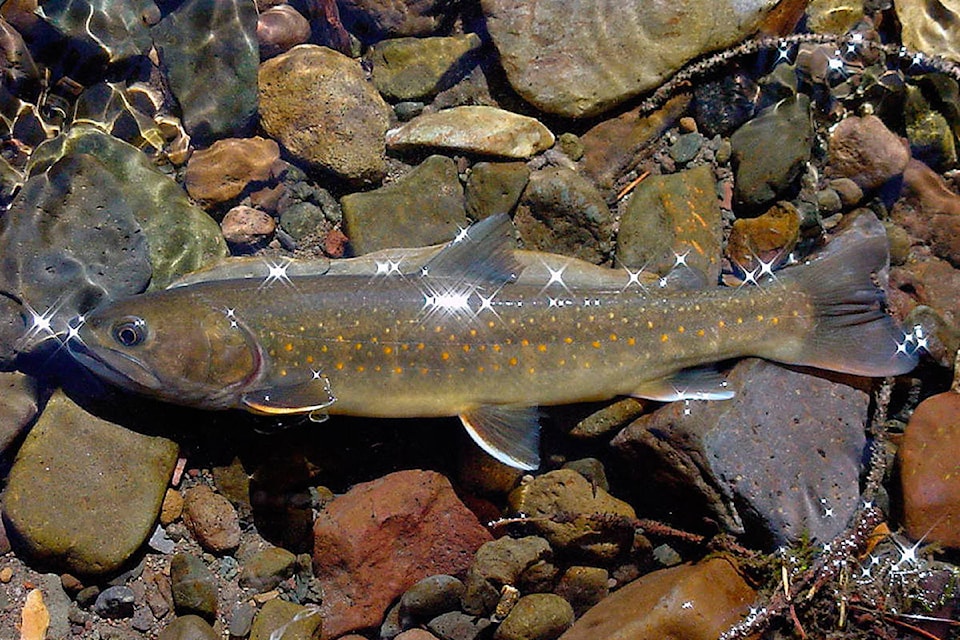The bull trout, Alberta’s emblematic fish that inhabited all rivers flowing from the Rocky Mountains, is now on the federal government’s threatened species list.
Tony Blake, a Red Deer resident who helped get the bull trout declared Alberta’s official fish, is dismayed to learn its population has dropped by 30 to 50 per cent over the past 25 years — despite two decades of provincial protection through the catch and release program.
The Red Deer River Naturalists member believes it’s vital to reverse this declining trend for the good of the top predator species and for our provincial waterways.
Blake, formerly with Trout Unlimited, lobbied to make the bull trout Alberta’s symbolic fish in the mid-1990s because there was no better choice: “Alberta is smack in the middle of the bull trout range,” he said.
“It’s the only species that inhabits all of the major rivers that flow from the Rocky Mountains, so whether it’s a symbol of success or failure, is up to us.”
Receiving federal protection for the bull trout is a good first step, added the conservationist, who hopes habitat preservation will result from the aquatic species being put on the threatened list under Canada’s Species at Risk Act.
Blake feels it’s important to ban all fishing on waterways that are key to the bull trouts’ survival.
The “voracious” predators will snap at anything that moves, he said — so they are the first fish hooked by anglers. And removing a bull trout from a lure and returning it to the water doesn’t guarantee its survival, he added.
As a top predator, the species has been called the grizzly bear of the water. Blake believes its decline is an indicator that many Alberta rivers and streams are in poor health.
Agricultural, industrial and lumber operations, and the construction of roads, pipelines, culverts and dams, all impact water quality.
Like salmon, bull trout need to migrate, but Blake said their spawning routes can be obstructed by waterfall-like discharge from culverts, or dams that block fish migrations (neither the Dickson Dam nor the Old Man Dam have fish passageways).
And quickly maturing fish imports to Alberta, such as the Eastern brook trout, present another problem: Blake said Alberta’s bull trout don’t spawn until they are four to six years old and they can be out-competed by the other fish.
The two trout species are also very closely related and crossbreeding is “swallowing up” the native fish population, he said.
Although Alberta’s bull trout will face an up-stream battle for survival, Blake hopes various isolated populations will now be studied and monitored since the species has federal, as well as provincial, protection.
“If we can preserve this species, it’s a sign of hope. If we lose this species, we have only ourselves to blame.”
lmichelin@reddeeradvocate.com
Like us on Facebook and follow us on Twitter
